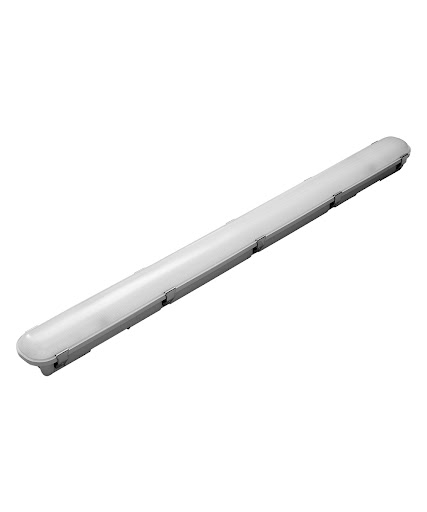Five Reasons to Switch to LED Vapor tight Lights

LED lights are much more than just a fad. With their energy-efficient, longer-lasting and more durable attributes, LED lights are quickly becoming the standard for all types of lighting applications. All aspects of the lighting industry have been transformed by the emergence of LED technology: everything from residential home lighting to commercial office buildings and industrial factory environments. In many areas of application, the switch to LED is an obvious choice. However, in others it’s not as clear-cut. For example, when it comes to industrial pipe lighting there are some significant drawbacks with LED technology that must be considered before making a switch. But do you know why? Keep reading to find out why switching to LED vapor tight light can be so advantageous!
Why switch to LED?
The most obvious reason to switch to LED vapor-tight lights is their energy efficiency. If you’re currently running incandescent or halogen lights, you’re likely paying a hefty electricity bill each month. While incandescent bulbs use 100% of their electricity to produce light (and emit heat), LED lights use significantly less. On average, incandescent bulbs use around 90 watts of electricity, halogen bulbs use about 150 watts and LED lights use about 10-15 watts! This means you can expect a significant reduction in your monthly electricity bill if you make the switch to LED. LED lights are also mercury-free and produce no toxic fumes unlike halogen lights.
Benefits of LED lights
LED lights are known for having extremely long lifespans. Depending on the type of LED light, manufacturers claim lifespans of up to 50,000 hours. Compare that to 5,000 hours for an incandescent bulb or 10,000 hours for a halogen bulb, and you can see why this is such a big deal. All that time you’ll get to enjoy the same consistent light quality and brightness without having to replace the bulbs. Due to the high quality of LED lights and their long lifespans, you’re able to use them in applications where you need high-quality, consistent light. For example, hospitals and laboratories use LED lights because they’re able to produce a specific color of light that’s perfect for the work being done.
Higher color accuracy and quality
LED lights produce high-quality, true-to-life colors. This is due to the fact that LED lights produce light through the use of microstructures that emit different colored lights. This is in contrast to other types of light bulbs that produce light through incandescence, where a filament is heated to produce a specific color of light. Because of this, you can expect higher color accuracy when using LED lights in applications where color accuracy is important. For example, retail stores often use LED lights to showcase products. With higher color accuracy, the products have a much more realistic appearance.
Environmental Benefits
LED lights use significantly less energy than other types of lights. This means they have a much smaller carbon footprint, making them an environmentally-friendly choice. Because they use less energy, they produce less carbon dioxide and other harmful emissions that can damage the environment. In fact, one estimate suggests that if every building in the United States (around 100 million) switched to LED, it would reduce CO2 emissions by about 1.5 million tons each year.
Reduced energy consumption
LED lights use significantly less energy than other types of lights. This means you can expect a significant reduction in your monthly electricity bill if you make the switch to LED. LED lights are also mercury-free and produce no toxic fumes unlike halogen lights.
Ultra-high durability
LED vapor-tight lights are extremely durable. They can withstand extreme temperatures, vibrations, and impacts that would cause damage to other types of lights. This is because they’re made with high-quality materials, including non-breakable glass, aluminum, and silicone. Because they are so durable, they can be used in a variety of applications, including in harsh environments. In fact, they’re used in airfields, highways, and even outer space.
Conclusion
LED lights are quickly transforming the lighting industry. From residential home lighting to industrial applications, LED lights are being used in more and more situations. This is because they have many advantages over other types of lights such as incandescent or halogen bulbs. With their energy efficiency, long lifespan, improved color accuracy, and lower cost of ownership, LED lights are the perfect choice for all types of lighting applications.